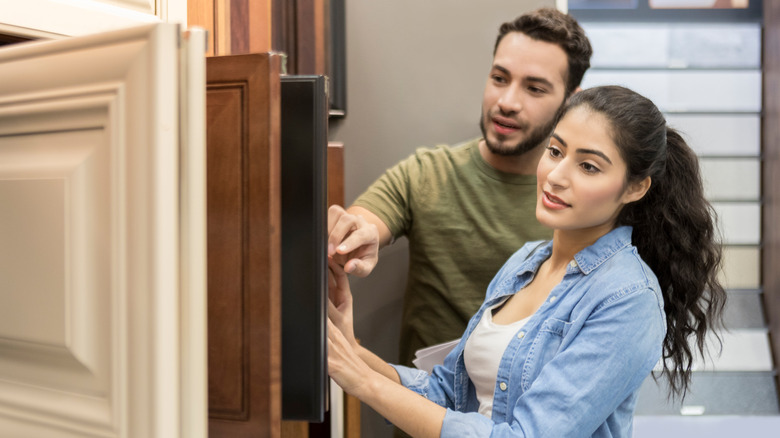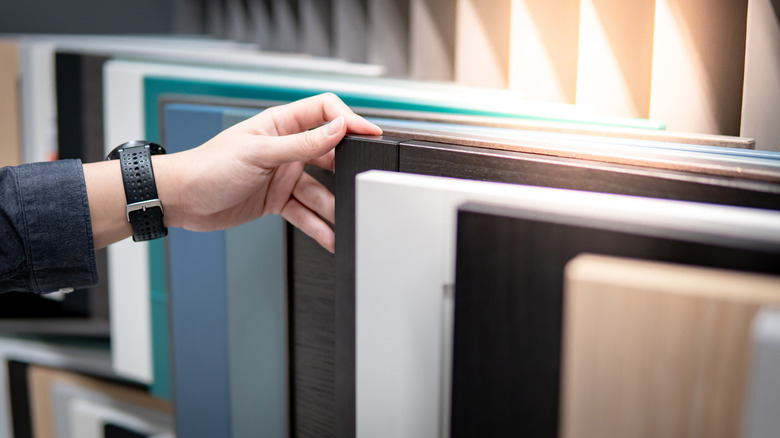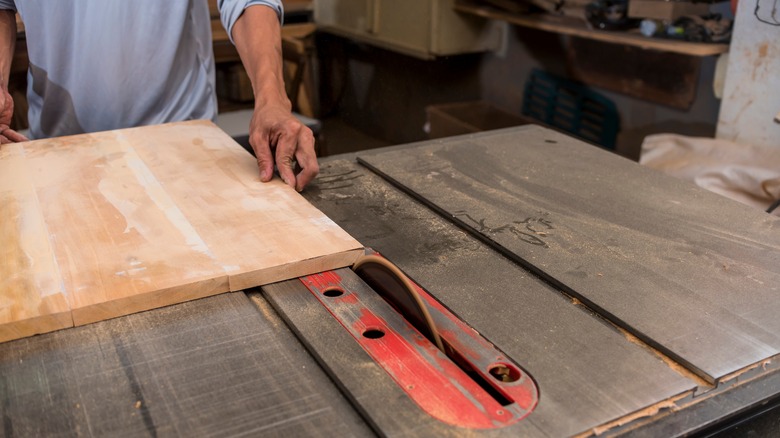The Smart Way To Save Big Bucks When Buying Cabinets From Big Box Stores
Cabinets for your dream kitchen can cost thousands of dollars, which is why people explore other options like used or salvaged cabinets. Even if you choose to get cabinets from a big box store like Home Depot, you can cut costs by getting unfinished cabinets that you can DIY to completion. Another smart way to save big when shopping is to buy and cut the material for the end panels yourself instead of paying for the prefab ones.
End panels are great at adding decoration to the exposed ends of your kitchen cabinets. A nice frame or trim can make the cabinets look stylish and expensive while also covering up any awkward gaps or unattractive sights. End panels are also needed if you're installing crown molding. Going with prefab end panels that are sold with the cabinet set is probably more convenient, but they cost more upfront and can't offer too much customization, so a DIY project could be worth the hassle.
Reasons to DIY
One 23.25-inch x 34.5-inch unfinished end panel piece can cost around $30 at Home Depot while a finished one with an attached fill strip and similar dimensions can cost around $40. On the other hand, a 4-foot x 8-foot cabinet-grade plywood panel, which can be used to create multiple panels, costs around $50. Getting the raw materials and putting in some effort can go a long way when you need multiple end panels. It's especially worth it if you already have some wood boards lying around.
Doing the end panels yourself can also give you a lot more flexibility with the design. Cutting the materials yourself allows for customization to fit specific dimensions so you can use only as much material as is necessary. This isn't only for new cabinets, either. If you want to refresh plain end panels because the edges look a bit worn, for example, this is an affordable way to do it.
End panel DIY
To DIY, first, get the right material for your wood boards and plywood pieces. The key is to match them to your cabinets, so look for the same grade and thickness. Next, get the measurements of the cabinet surface so you can cut the pieces to create the structure. Note that building these panels is a project for more experienced DIYers. You'll hopefully already have the necessary tools and a high level of skill so that the process is not only more cost-effective in terms of materials, but also labor and equipment. Still, some big box stores might be able to help you with the wood-cutting, so that's something to look into if you'd like to save time.
You can either nail the boards directly to the cabinet end or create the frame separately, as seen in this YouTube video by Rogue Engineer. Creating the frame separately is typically for when you have a specific look in mind; for example, if you want the designs of the end panels to match those of the cabinet doors. If you're just nailing the boards to the cabinet, you just have to ensure they are straight and aligned and you're done. For a separate frame creation, you have to paint the frame and the plywood, attach them, and screw the panel on from the insides of the cabinet to have that clean look on the surface.


